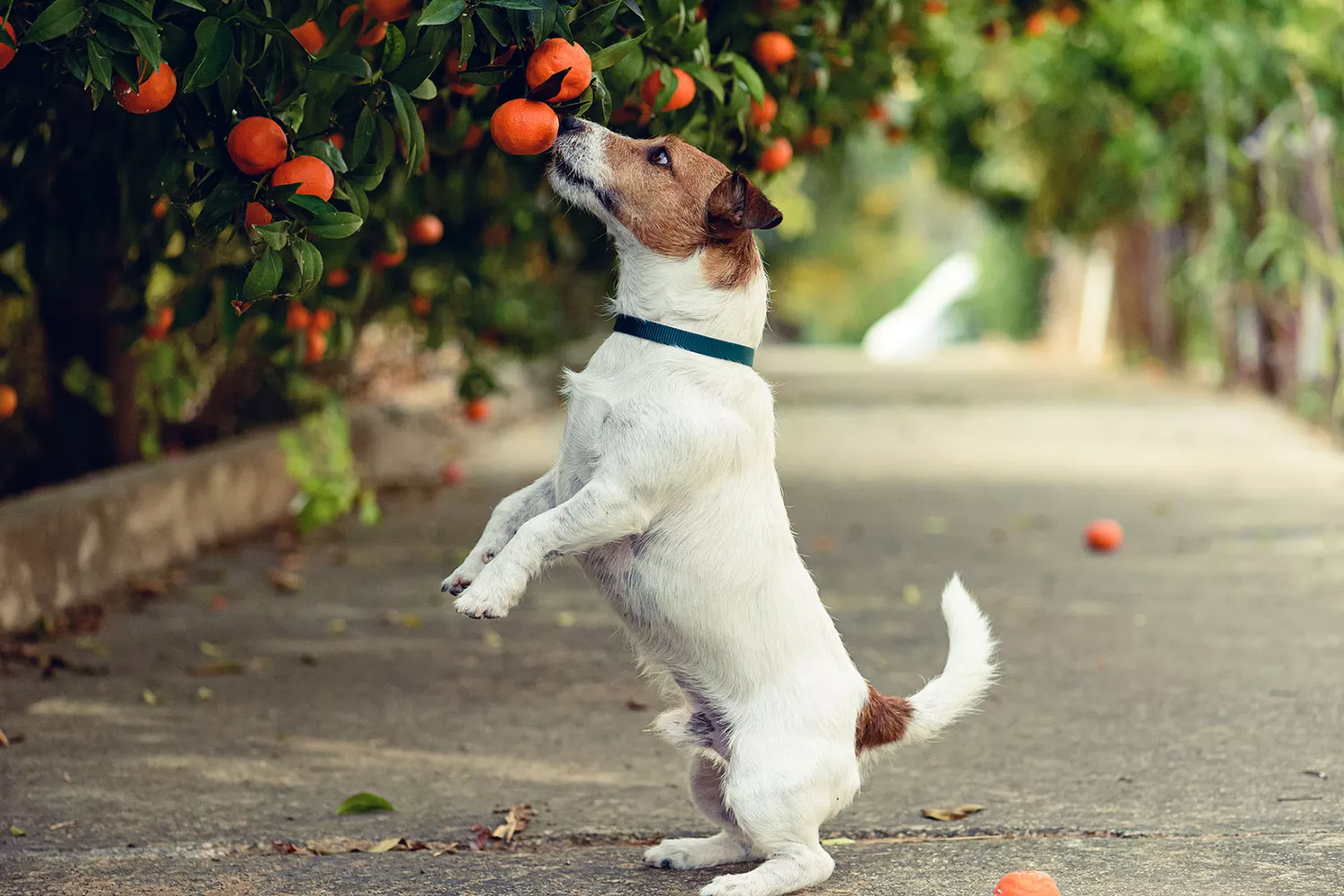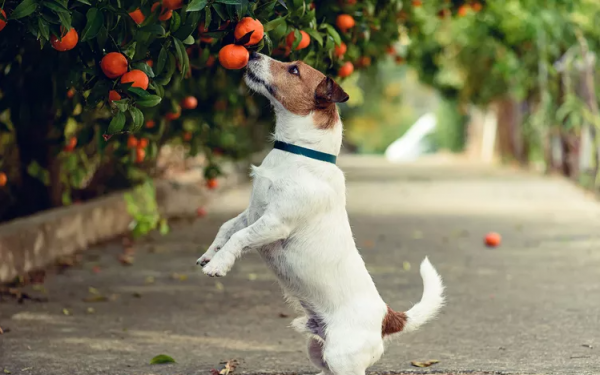Oranges are a great source of fiber and vitamin C for humans, but can dogs eat oranges? As it turns out, the fruit can be good for dogs—but there are a few important precautions to keep in mind.
The keys for dogs who eat oranges? Limit how much your dogs consume and keep the leaves and peels away from them.
We spoke with Tina Wismer, DVM, DABVT, DABT, and senior director at the ASPCA Animal Poison Control Center, to find out what else pet parents need to know before feeding their pups a slice or two of this juicy snack.
Can Dogs Have Oranges?
Dogs can eat oranges as long as they stick to the citrusy flesh. That’s the only part they should be consuming. In other words, dogs should not eat orange peels.
“While the actual fruit itself is edible, the peels and plant material can cause issues,” Wismer says.
Thick peels and leaves are tough for dogs to digest and can cause an intestinal blockage. Additionally, “orange peels contain essential oils that can be irritating,” Wismer notes. Peels and plant material can also cause vomiting, diarrhea, and even depression in dogs, so when it comes to the rest of the fruit—and even parts of the plant itself—keep the peels and leafy plant material out of your pup’s reach.

Are Oranges Good for Dogs?
Oranges are low in sodium and chock full of nutrients, including potassium, which helps dogs’ bodies regulate fluids. Plus, the fiber content of orange flesh is great (in limited amounts) for their digestive systems. And, just like in humans, the levels of vitamin C in this citrus fruit help keep dogs’ immune systems on point.
Overall, oranges for dogs make great treats or rewards, but you don’t want to give them too much.
When Are Oranges Bad for Dogs?
Peels and leaves aside, oranges can be bad for dogs if they eat too much.
Like many fruits, oranges contain a reasonable amount of sugar, which can lead to diabetes and may cause some gastrointestinal issues for your pup when consumed in high amounts. Limit your dog’s daily consumption to one or two wedges from a peeled orange, and that should keep him from experiencing these issues.
As always, when introducing a new kind of food to your pet, it’s a good idea to feed your dog a small amount of an orange slice first. Then monitor him closely to make sure it agrees with his stomach. If he seems to enjoy it, feel free to reward him with a larger tasty orange treat—but avoid overindulgence, as too many treats can lead to weight gain and obesity.
Besides, a little extra vitamin C for you wouldn’t hurt.



